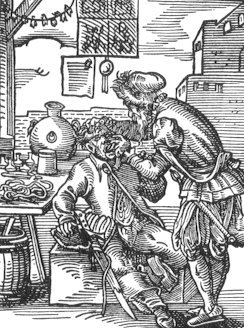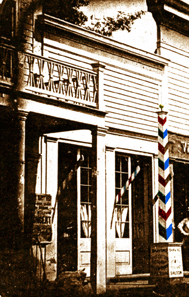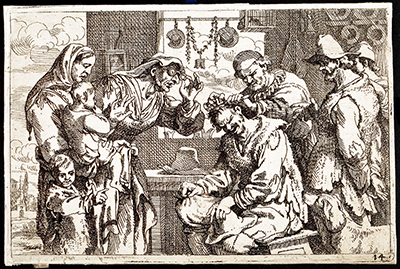BARBER POLE HISTORY
from http://www.thamessalon.com

© Floyd D.P. Øydegaard collection.
Early Goldrush example with just red and white.

The barber's trade is an ancient one.

© Floyd D.P. Øydegaard collection.
Early Goldrush example with just red and white.

The barber's trade is an ancient one.






